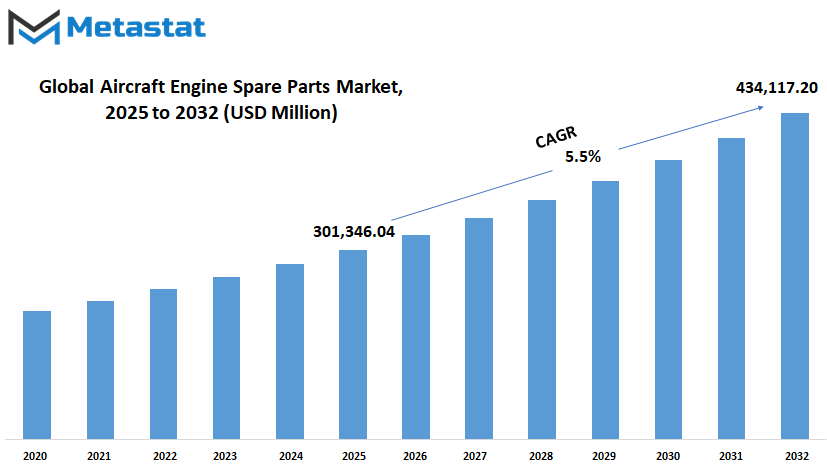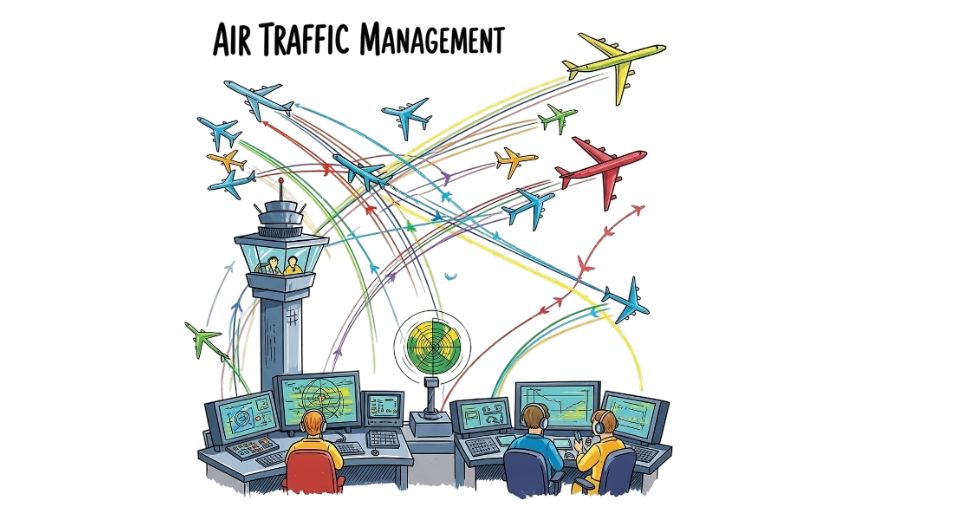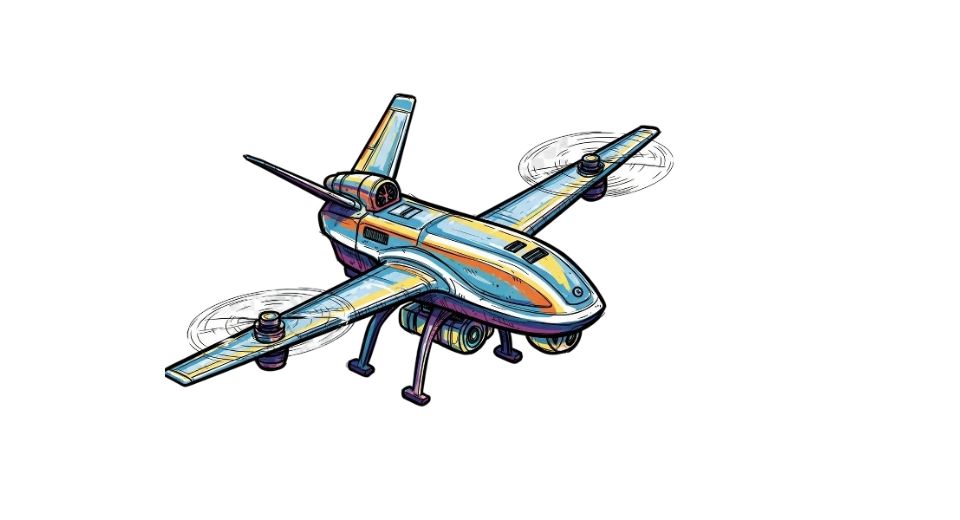MARKET OVERVIEW
The Global Aircraft Engine Spare Parts market allied with operations in the aviation industry, keeps the fleets running and maintained across the world. One such source of maintenance will always be available for airlines, maintenance providers, and aircraft operators-on qualitatively high supply source maintenance spare parts to keep safety, efficiency, and regulation compliance. The production, distribution, and services for critical engine parts are carried out without interruption in commercial and military aviation operations. Spare parts will still be on-demand to sustain air travel and cargo transport because of the wear experienced by aircraft engines due to numerous flight operations.
The engines of aircraft possess miscellaneous complex mechanical and electronic parts wherein the periodic maintenance, replacement, and upgrade are required for optimum performance. The Global Aircraft Engine Spare Parts market will be catering to the requirements of engine parts that include turbine blades, compressors, combustion chambers, fuel systems, and electronic control units, which remain under continual need. These components will undergo stringent manufacturing and testing processes to ensure that they meet industry standards and safety regulations. Spare parts will be custom-made to function under different operating conditions due to fleets being used in various geographic and climatic situations.
The aftermarket segment of the Global Aircraft Engine Spare Parts market will serve as an avenue for airlines and aircraft operators to efficiently manage their maintenance schedules. MRO activities will drive demand for certified spare parts as regulatory authorities enforce stringent safety measures. Engine manufacturers will collaborate with third-party suppliers and MRO service providers to ensure a consistent supply chain, keeping aircraft grounded for minimal time. Airlines will have to use strategic inventory and just-in-time logistics to meet the need for replacing spare parts without compromising flight schedules.
The new technologies in manufacturing will be the main avenues through which the Global Aircraft Engine Spare Parts market would reap great harvests-precision engineering, materials science, and additive manufacturing will be harbingers of better and lighter components. Incorporating digital tools such as predictive analytics and artificial intelligence would go farther in improving maintenance planning by providing an assessment of replacing part needs with real time data on engine performance. This development would enable airlines to gain maximum value from operations, minimize maintenance expenditure, and increase the availability of aircraft.
Global Aircraft Engine Spare Parts market is estimated to reach $434,117.20 Million by 2032; growing at a CAGR of 5.5% from 2025 to 2032.

GROWTH FACTORS
The Global Aircraft Engine Spare Parts market will be influenced by more and more people taking to the air around the globe. Those who keep using air transport will inexorably compel the airlines to increase their fleets to meet the requirements of passengers. The greater the increase in fleets, the greater will be the need for continuing engine maintenance at which time there will always be a democratized requirement for spare parts. There will also be an unceasing demand for high-quality spare parts from airlines and the aviation industry as they will have to ensure that their engines are in top condition otherwise the industry will be looking up for the great future witnessed in years to come.
With the increasing demand for Maintenance, Repair, and Overhaul (MRO) services, another critical factor boosting the growth of the market is the rising demand for spare parts. Aircraft engines are regularly serviced and parts replaced for serviceability and safety so that the MROs become sought after for their services whereby cost-effective considerations end up extending the life of their engines. This boom in MRO activity results in an increased demand for spare parts, subsequently enhancing the growth prospects of the market.
However, there arise worries that hinder the further growth of the market despite positive dynamics on the horizon. First, it is the high cost involved with the manufacturing of precision-engineered parts. Aircraft engine components need to comply with rigid safety and quality standards, thus making the manufacturing a complicated and costly affair. Large investments in research, development, and production tend to create increased production lead times, frequently leading to an unfavorable point to respond to market needs. In addition, the stringent regulatory framework deserves much attention, as this step in the approval and distribution procedure for spare parts requires considerable time. These regulations, although vital to ensuring passenger safety, serve as a potential bottleneck to new spare part availability.
While these challenges put forth some unfavorable terrain, technological advancements may open new frontiers for growth. Advances in 3D printing and additive manufacturing are providing an opportunity to produce spare parts that are faster and less expensive than before. Such technologies enable manufacturing on demand and minimize reliance on large inventories, preventing production delays. The ability to manufacture complex components more efficiently would provide a huge fillip to this sector to ensure good-quality spare parts are available at low prices.
Moving forward, with an expanding aviation industry and technology, the Global Aircraft Engine Spare Parts market is set to thrive. With increasing air traffic and enhanced MRO activities and manufacturing, a promising future is lying ahead for the market. The demand for reliable spare parts will continue to drive the tremendous growth of this industry as airlines and aviation service providers contribute towards maintaining efficiency and safety.
MARKET SEGMENTATION
By Part Type
The Global Aircraft Engine Spare Parts market will continue to grow to respond to an increase in air travel and technological advancements influencing the aviation domain. Airlines and operators will particularly need spare parts to keep their fleets safe, efficient, and compliant with industry regulations. As advanced technologies are embraced in aviation, the need for such high-end components will prevail, and manufacturers will supply advanced solutions for engine maintenance and repairs.
Aircraft engines consist of various critical components that create the power required for flight by working together. Over time, these parts face wear and tear from continuous running in extreme temperatures and high stress. Thus, justifications for reliable spare parts will begin to apply as airlines seek to extend the life of engines while minimizing their own operational disruptions. Combustion components are among the most critical parts because of their role in fuel ignition and energy generation. Maintenance of the combustion component is critical to engine efficiency. Turbine components are still high on the agenda: they convert energy to thrust, close to the turbine exit, after high temperature and pressure work. Likewise, compressor components maintain air in and out and are becoming a more serious consideration for maintaining fuel efficiency and minimal emission.
Fuel system components will also gain importance as the industry pledges to look for more sustainable aviation solutions in the transition. With the complementary advancements made toward improved fuel efficiency and investigations into alternative energy resources, these parts will be aided on their way toward green aviation. Exhaust system components will have to meet stricter environmental regulations for emissions control and correct airflow. Beyond this, thrust reverser components will continue to be an important focus as air traffic expands for its role in deceleration and safety upon landing.
Innovation, digitalization, and sustainability will structure future developments within the Global Aircraft Engine Spare Parts market. The longevity and efficiency of the components will cause a larger application of high-tech materials such as lightweight alloys and composites. Predictive maintenance, using artificial intelligence and data analytics to gather engine data, will create a paradigm shift in how airlines maintain healthy engines and reduce the risk of unexpected failures while optimizing the part replacement schedules. Digital applications in 3D printing technology will further improve the supply chain by allowing for enhanced speed and cost for manufacturing these spare parts.
For the horse-drawn carriage is the highly rated possibility of the Global Aircraft Engine Spare Parts market to exist even while the flying distance travels worldwide to the another extent. Adaptation is needed by airlines, manufacturers, and suppliers to meet emerging trends and regulatory requirements in the competitive market. If we consider efficiency, safety, and sustainability, the aviation industry will ensure that aircraft engines will be kept in good repair and working for the many years to come.
By Engine Type
The Global Aircraft Engine Spare Parts market is poised for continuous growth due to technological advances in the aviation industry. The demand for spare parts would be governed by the increasing number of aircraft in operation, continuous maintenance requirements, and the desire for high-performance components that ensure safety and efficiency. Airlines, maintenance providers, and manufacturers will now focus on keeping aircraft engines in optimal to good condition, creating a high demand for reliable spare parts to use.
Different engineers contribute greatly to market driving forces. Turbofan engines used for commercial aviation will still be the dominant segment because of their efficient and long-haul flight performance. As fuel consumption and carbon emissions will be on the airline's agenda, advancements in turbofan technology will be a major driver in the creation of newer spare parts. Turboprop engines are generally used in regional aircraft and will always have a small demand in markets where short-distance travel is important. Spare parts for these engines will have to respect the need for endurance and adaptability to varying operating conditions.
Turboshaft engines, the kind of powerplant used in rotorcraft, also contribute to the growth of the market. These engines are crucial for military, medical, and commercial missions with a dependable supply of spare parts. Meanwhile, piston engines remain important for light aircraft, sustaining the constant demand for their spare parts. As personal and training aircraft are becoming increasingly popular, securing the long lifetime of these engines will require a steady supply of engine components.
The thrust for sustainability and efficiency will remain the foremost driving forces in the market. New materials and manufacturing methods will allow for lighter and more durable spare parts to be manufactured. Smart technology integration will facilitate real-time engine component monitoring and predictive maintenance, allowing for the effective reduction of downtime and operational costs. 3D printing should be extremely noteworthy in producing spare parts on demand, combatting long lead time and eliminating waste.
As the aviation industry shifts toward greener alternatives, hybrid and electric propulsion systems may likely impact traditional engine spare parts demand. However, conventional aircraft engines will remain a backbone of global air travel, thus making the importance of the spare parts market. The emerging trends will influence companies to create demands for reliability while keeping innovation in perspective. The Global Aircraft Engine Spare Parts market will stay alive in the best of times, supporting the progressively changing needs of the aviation sector through concentrating on quality, efficiency, and sustainability.
By Distribution Channel
The Global Aircraft Engine Spare Parts market is expected to continue its growth in the near future as the aviation sector keeps updating with new technological advancements. The dynamics of spare parts demand shall be guided by the increasing number of aircraft in operation, continued maintenance requirements, and the need for components that assure safety and efficiency with top-notch performance. This will subsequently encourage airlines, maintenance providers, and manufacturers to take good care of their aircraft engines by demanding spare parts that are reliable.
Various types of engines affect the market as well. Turbofan engines, the backbone of commercial aviation, shall remain a stronghold sector due to their efficiency and performance in long-haul flights. The very advancement of turbofan technology stemming from the demand for reducing fuel consumption and carbon emissions will be a driving force for the demand for new spare parts. Turboprop engines are commonly used in regional aircraft and must remain in demand in markets where short-distance travel is essential. Therefore, these spare parts needed for engine overhaul exhibit the durability and variability in ambient conditions that would be required of them.
The turboshaft engines will also affect growth in the market. Helicopter turboshaft engines are required for military, medical, and commercial applications in which dependability is an absolute must. These engines will somehow demand high-quality spare parts to operate effectively in critical operations. Piston engines are also extensively used in some small aircraft, making it possible for these engines to keep demand for spare parts steady. A continuous supply of components will maintain the growing demand for personal and training aircraft.
Sustainability and efficiency will characterize future growth drivers. New materials and new processes will create a new generation of lighter yet durable spare parts. With smart technologies in place, real-time monitoring of engine components will facilitate predictive maintenance, lowering downtime and operational costs. The ability to produce spare parts on-demand via 3D printing may reduce lead times and waste.
On the other hand, these advancements toward greener alternatives may affect the demand pull on traditional engine spare parts with the possible entry of hybrid and electric propulsion systems. On the contrary, conventional aircraft engines will continue to remain relevant in global air travel, hence making the spare parts market essential. Companies will have to reorient themselves towards emerging trends while being careful to balance the need for innovation with the reliability required by aviation. With a focus on quality, efficiency, and sustainability, the Global Aircraft Engine Spare Parts market will flourish in the years ahead to cater to the continuously modifying aviation sector.
By End-Users
It is obvious that there will be a further and continuous increment in the global aircraft engine spare parts market alongside an improvement in aviation technology and an increase in demand for air travel. As aviation progresses, the need for reliable spare parts becomes even more critical. Airlines, military organizations, and private aviation will all require high-grade engine components to ensure safety and efficiency with which these aircraft operate. Such parts enable aircraft performance; reduce downtime, icing, as well as meeting regulatory requirements at their most stringent.
Commercial aviation is expected to be one of the windfall sectors for the expansion of the spare parts market. This demand has been fueled by fleet expansions undertaken by airlines to satisfy an increasing number of passengers. Modern aircraft engines are much more advanced with each passing time owing to research and development in engine technologies, making them complex machines requiring highly precision and well-engineered components. Airlines will need a smooth flow of spare parts to keep their aircraft flying and avoid any problems in unexpected maintenance activities. The demand for fuel-efficient engines will also ensure that the components need to be upgraded to avoid being in conflict with environmental norms.
Military aviation too will be a major booster to the market. Every defense force has aircraft that can serve a number of missions, such as surveillance, transport, or combat. A military aircraft needs to be in the best shape at all times for it to combat operational readiness. The demand in this sector for spare parts is most likely to remain strong, as air forces earmark their funds for fleet modernization and mission-critical reliability. The development of new engine components due to advancements of military aviation technologies will also increase the need for defense spare engines.
General aviation, private jets and small aircraft, are also contributing to the growth of the market. Since many individuals and companies are investing heavily in private air travel, the need for high-quality spare parts will also increase. That makes reliable engine components an important aspect because private aircraft owners are highly safety and efficiency conscious. As business aviation continues to expand, parts availability will be indispensable in keeping aircraft operational and minimizing downtime.
Staring ahead, the market is all about innovation in manufacturing processes and materials. The advanced materials will offer durability and efficiency in engine components; thus, reducing frequent replacements. Moreover, through digital technologies such as artificial intelligence and predictive maintenance, management of spare parts inventories and real-time availability will be ensured. Companies in the aviation sector will focus on sustainability, which will henceforth build components for engines friendliness to the eco-system in terms of reducing carbon emissions.
The future of the global aircraft engine spare parts market will be shaped mainly by the assigned roles for technology advancement, the growing demand for air travel, and the improved efficiency they expect.
|
Forecast Period |
2025-2032 |
|
Market Size in 2025 |
$301,346.04 million |
|
Market Size by 2032 |
$434,117.20 Million |
|
Growth Rate from 2025 to 2032 |
5.5% |
|
Base Year |
2024 |
|
Regions Covered |
North America, Europe, Asia-Pacific, South America, Middle East & Africa |
REGIONAL ANALYSIS
Different factors across regions shape the Global Aircraft Engine Spare Parts market in a different manner for overall growth. North America remains a focal area due to its well-developed aviation infrastructure, an established base of manufacturers, and continued improvements in technology. The United States is particularly driving the market on account of the high demand for commercial and military aircraft, which necessitates the constant requirement of spare parts. Canada and Mexico also play an important role as investments in aviation and maintenance services continue to grow.
Following close behind are the European countries that benefit from their strong aviation network and increasing air travel. In this regard, countries such as the UK, Germany, France, and Italy are instrumental in the growth of the market. Major aircraft manufacturers together with a well-developed maintenance, repair, and overhaul (MRO) sector lead to high demand for engine spare parts. Further enhancements in the market are being spurred by increasing focus on sustainable aviation and fuel-efficient engines, as airlines strive to upgrade their fleets with advanced technology.
Asia-Pacific is becoming a new high-growth area due to air traffic increase and economic growth. Countries such as China, India, Japan, and South Korea lead this transformation with initiatives of strengthening aviation infrastructure through investments and acquisitions of new aircraft. As the market grows, airlines focus on maintaining operational efficiency that consequently affects the demand for reliable spare parts. Moreover, increasing military expenditures within this region are guaranteed to maintain a steady demand for high-performance engine components. The new emergence of maintenance hubs in the region is likely to benefit the supply chain with better access to spare parts for airlines and service providers.
South America is slowly imprinting itself onto the market, identified by Brazil and Argentina, where demand for spare parts is shared by an increasing airline industry and a need for modernization of fleets. The economic difficulties faced by the region have affected investments in the aviation field; however, strategic partnerships and government initiatives are easing the recovery of this sector. Considering the great focus on improving air connectivity, this region will foresee favorable long-term opportunities for the market.
The Middle East and Africa are blossoming as a vital region of the market, borne by the growth of international airlines and strategic aviation hubs. The GCC countries, the United Arab Emirates and Saudi Arabia in particular, hold an essential role in proposing the market in terms of infrastructure and fleet expansion investments. As airlines in Africa aim to improve their reliability and efficiency, the burgeoning demand for spare parts comes from their growing air travel industry.

COMPETITIVE PLAYERS
The future of the Global Aircraft Engine Spare Parts market will be a product of the synergy between innovations technology, industry collaborations and the forever increasing demand for effective and efficient aircraft operations. Companies involved in aircraft engine spare parts have to adapt with the times towards sustainability, innovation, and cost effectiveness provided the aviation industry keeps evolving.
The gains in more advanced solutions from competition among the major players in the sector will be realized through getting airlines and operators high-quality engine components. Companies like General Electric Company, Rolls-Royce Holdings plc, Pratt & Whitney, and Safran Group will progressively develop their offerings on cutting-edge technologies such as predictive maintenance and additive manufacturing to ease production of durable and efficient spare parts, thus reducing the maintenance cost and improving performance.
As some of the exogenous factors that will also shape the future demand for aircraft engine spare parts would be the trend towards more fuel-efficient and environmentally-friendly engines, it is advisable that manufacturers match their future production goals with emissions that were going lower and efficiency that was growing further. Thus, such companies' research and development such as Honeywell International Inc., HEICO Corporation, and GA Telesis, LLC would aim towards lightweight materials and designs that would increase fuel efficiency while maintaining sturdiness maneuver unit costs and economy earned within others.
Market mergers and acquisitions will play a significant part in the future of the market. Future innovations that streamline supply chains and optimize part production would be spurred on by collaborations between the established companies and emerging technology firms. Partnership opportunities like these could enhance manufacturing capabilities and global reach for companies such as StandardAero, AAR Corp., and Moog Inc., ensuring spare parts are more easily reached by a variety of customers within the industry.
The digitization of aviation maintenance would continue to increase with data-driven approaches that will revolutionally change how spare parts management and distribution occur. Thus, by company investments such as Collins Aerospace and VSE Corporation, quite innovative functions would predict component failures before they occur using artificial intelligence and big data analytics. Such a predictive maintenance scheme would create further avenues for market growth, since operators would find new ways on an efficiency basis and save costs as such situations arise.
Emerging markets would certainly add fuel to the growth burning. It indicates that companies such as Hindustan Aeronautics Limited (HAL) will be key players in fulfilling regional needs in aviation so that aircraft flying into economically growing countries will get spare parts for servicing in a timely manner. As demand increases, investment on manufacturing, supply chain improvements, and meeting the needs of a globalizing aviation sector will be needed.
Aircraft Engine Spare Parts Market Key Segments:
By Part Type
- Combustion Components
- Turbine Components
- Compressor Components
- Fuel System Components
- Exhaust System Components
- Thrust Reverser Components
By Engine Type
- Turbofan Engines
- Turboprop Engines
- Turboshaft Engines
- Piston Engine
By Distribution Channel
- OEM (Original Equipment Manufacturer)
- Aftermarket
By End-Users
- Commercial Aviation
- Military Aviation
- General Aviation
Key Global Aircraft Engine Spare Parts Industry Players
- General Electric Company
- Rolls-Royce Holdings plc
- Pratt & Whitney (a division of Raytheon Technologies Corporation)
- Safran Group
- Honeywell International Inc.
- HEICO Corporation
- VSE Corporation
- GA Telesis, LLC
- Hindustan Aeronautics Limited (HAL)
- StandardAero
- AAR Corp.
- Moog Inc.
- Collins Aerospace
WHAT REPORT PROVIDES
- Full in-depth analysis of the parent Industry
- Important changes in market and its dynamics
- Segmentation details of the market
- Former, on-going, and projected market analysis in terms of volume and value
- Assessment of niche industry developments
- Market share analysis
- Key strategies of major players
- Emerging segments and regional growth potential














 US: +1 3023308252
US: +1 3023308252






